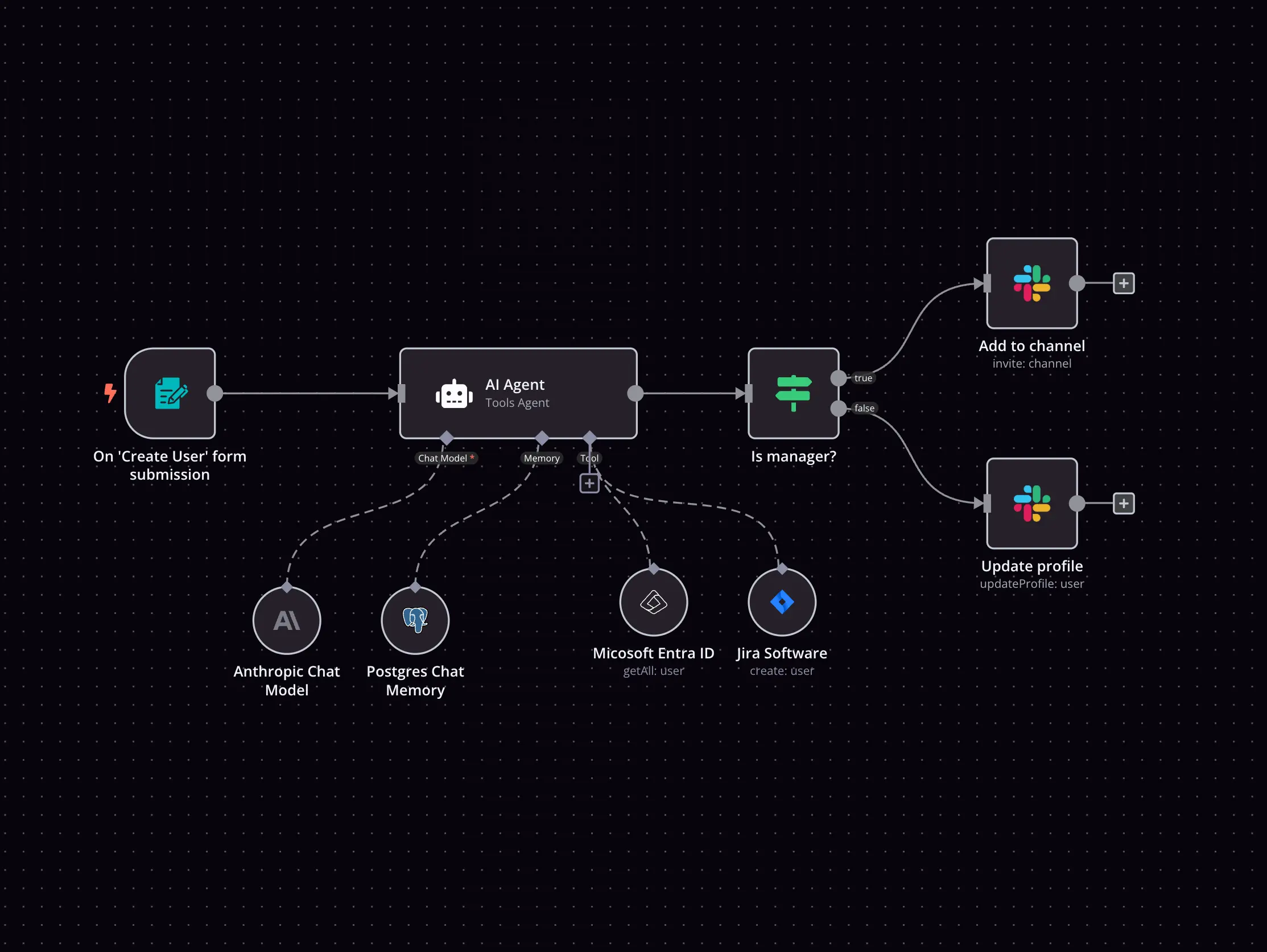Confluent and Spotify integration
Save yourself the work of writing custom integrations for Confluent and Spotify and use n8n instead. Build adaptable and scalable Development, workflows that work with your technology stack. All within a building experience you will love.

How to connect Confluent and Spotify
Create a new workflow and add the first step
In n8n, click the "Add workflow" button in the Workflows tab to create a new workflow. Add the starting point – a trigger on when your workflow should run: an app event, a schedule, a webhook call, another workflow, an AI chat, or a manual trigger. Sometimes, the HTTP Request node might already serve as your starting point.
Build your own Confluent and Spotify integration
Create custom Confluent and Spotify workflows by choosing triggers and actions. Nodes come with global operations and settings, as well as app-specific parameters that can be configured. You can also use the HTTP Request node to query data from any app or service with a REST API.
Supported API Endpoints for Confluent
List authors
Retrieve a list of authors sorted by title.
Update book
Updates the book details for a specified author and title.
Create topic
Creates a new Kafka topic in the specified cluster.
Get topic partitions
Retrieve the partitions of the specified topic.
Get topic configs
Retrieve the configuration settings for the specified topic.
Reassign topic partitions
Reassign the partitions of the specified topic.
Set user profile data
Sets the profile data for a user in Slack.
Get user profile
Retrieves the profile data for a user in Slack.
Delete user photo
Deletes the photo of a user in Slack.
Set user photo
Sets the photo of a user in Slack.
Set user active status
Sets the active status of a user in Slack.
To set up Confluent integration, add the HTTP Request node to your workflow canvas and authenticate it using a generic authentication method. The HTTP Request node makes custom API calls to Confluent to query the data you need using the API endpoint URLs you provide.
See the example hereThese API endpoints were generated using n8n
n8n AI workflow transforms web scraping into an intelligent, AI-powered knowledge extraction system that uses vector embeddings to semantically analyze, chunk, store, and retrieve the most relevant API documentation from web pages. Remember to check the Confluent official documentation to get a full list of all API endpoints and verify the scraped ones!
Spotify supported actions
Get
Get an album by URI or ID
Get New Releases
Get a list of new album releases
Get Tracks
Get an album's tracks by URI or ID
Search
Search albums by keyword
Get
Get an artist by URI or ID
Get Albums
Get an artist's albums by URI or ID
Get Related Artists
Get an artist's related artists by URI or ID
Get Top Tracks
Get an artist's top tracks by URI or ID
Search
Search artists by keyword
Get Liked Tracks
Get the user's liked tracks
Get Following Artists
Get your followed artists
Add Song to Queue
Add a song to your queue
Currently Playing
Get your currently playing track
Next Song
Skip to your next track
Pause
Pause your music
Previous Song
Skip to your previous song
Recently Played
Get your recently played tracks
Resume
Resume playback on the current active device
Set Volume
Set volume on the current active device
Start Music
Start playing a playlist, artist, or album
Add an Item
Add tracks to a playlist by track and playlist URI or ID
Create a Playlist
Create a new playlist
Get
Get a playlist by URI or ID
Get the User's Playlists
Get a user's playlists
Get Tracks
Get a playlist's tracks by URI or ID
Remove an Item
Remove tracks from a playlist by track and playlist URI or ID
Search
Search playlists by keyword
Get
Get a track by its URI or ID
Get Audio Features
Get audio features for a track by URI or ID
Search
Search tracks by keyword
Confluent and Spotify integration details
FAQ
Can Confluent connect with Spotify?
Can I use Confluent’s API with n8n?
Can I use Spotify’s API with n8n?
Is n8n secure for integrating Confluent and Spotify?
How to get started with Confluent and Spotify integration in n8n.io?
Looking to integrate Confluent and Spotify in your company?
The world's most popular workflow automation platform for technical teams including
Why use n8n to integrate Confluent with Spotify
Build complex workflows, really fast


